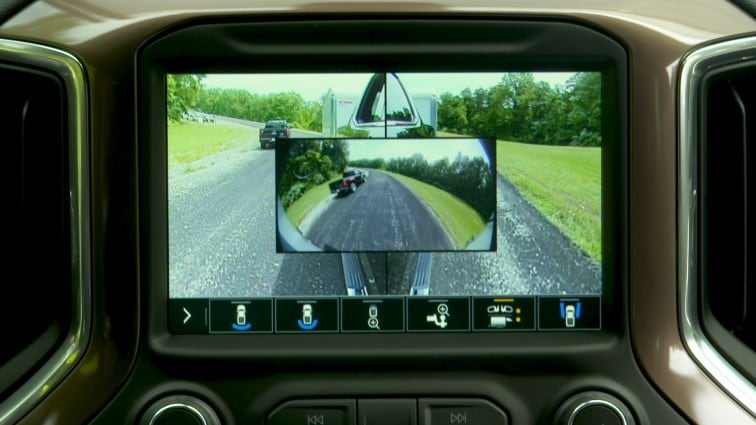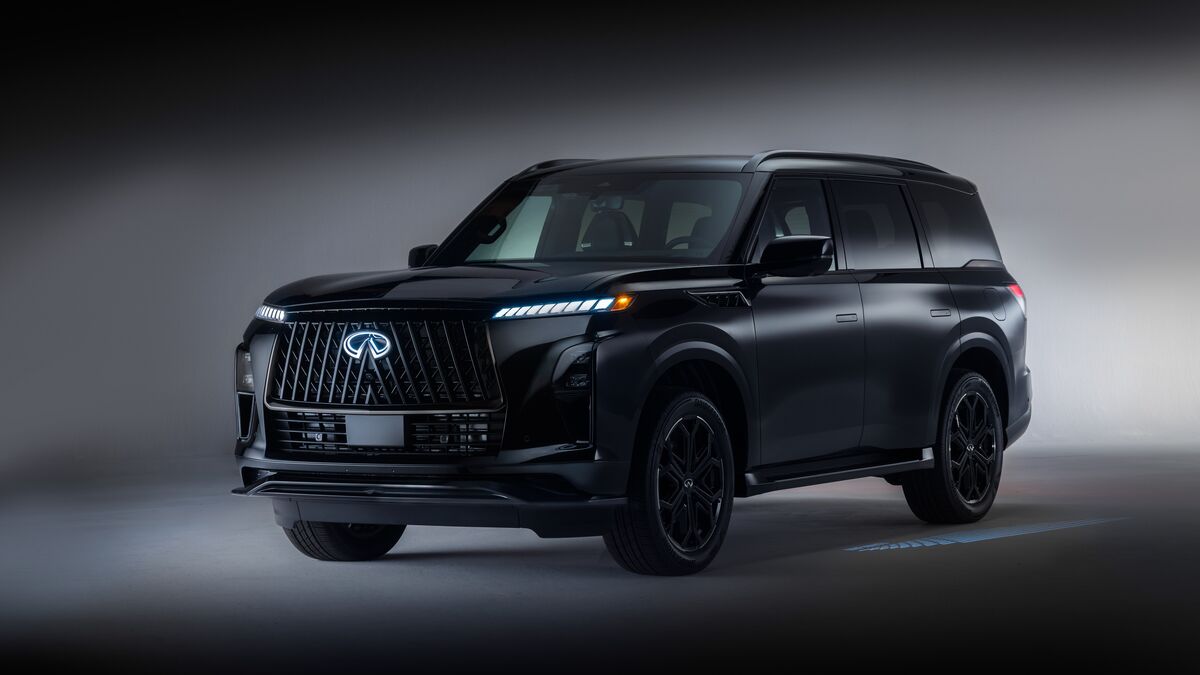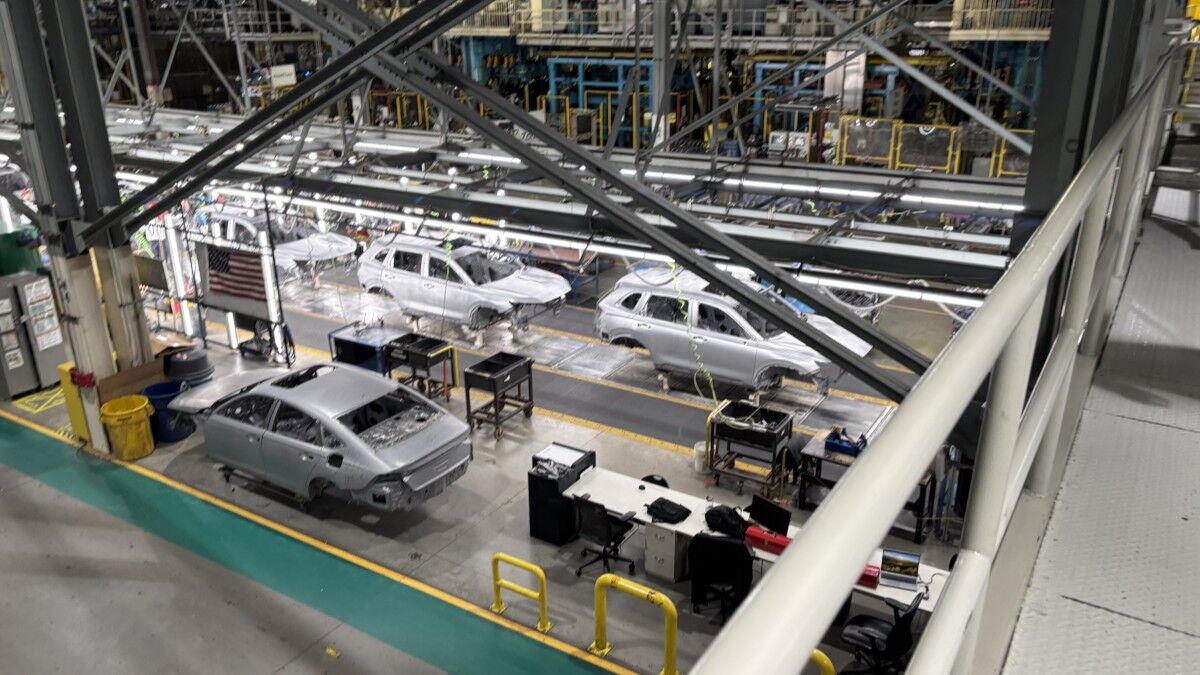Trailer-towing technologies are software and hardware systems that make hitching up and navigating with heavy loads or large equipment (fifth wheels, boats, etc.) easier for properly-equipped pickup trucks and SUVs. Towing systems usually incorporate overhead and backup cameras to see while reversing toward the trailer coupler.
Rearward visibility is one of the biggest challenges in trailer-towing, whether backing up or moving forward.
Surround-view cameras can give drivers a 360-degree view of the vehicle and trailer. Other rear-facing cameras create an X-ray view of the space behind the trailer. Coupled with driver alerts, this technology is so much better than the days of relying solely on the side mirrors to see objects potentially in the way or entering the extended blind spots. These cameras send images to a multimedia display in the dash.
When attempting to hitch to a trailer, some towing technologies provide directional guidance (through the video display) and steering assistance based on the camera views. However, drivers must modulate acceleration and braking. More advanced systems take over the task completely like a parking assist can automate backing a car into a space.
Tire pressure monitoring systems aren’t just for your truck tires; these systems can also keep tabs on the trailer tires because a flat one could be disastrous for your load.
Adaptive cruise control and towing-focused navigation can keep drivers out of tight spots on the road while pulling cumbersome loads.
Hitches or trailer tongues with built-in scales can tell drivers if their cargo’s weight is appropriate for their vehicle’s towing capacity. See also blind-spot monitor, car hitch, GCWR, and GVWR.








